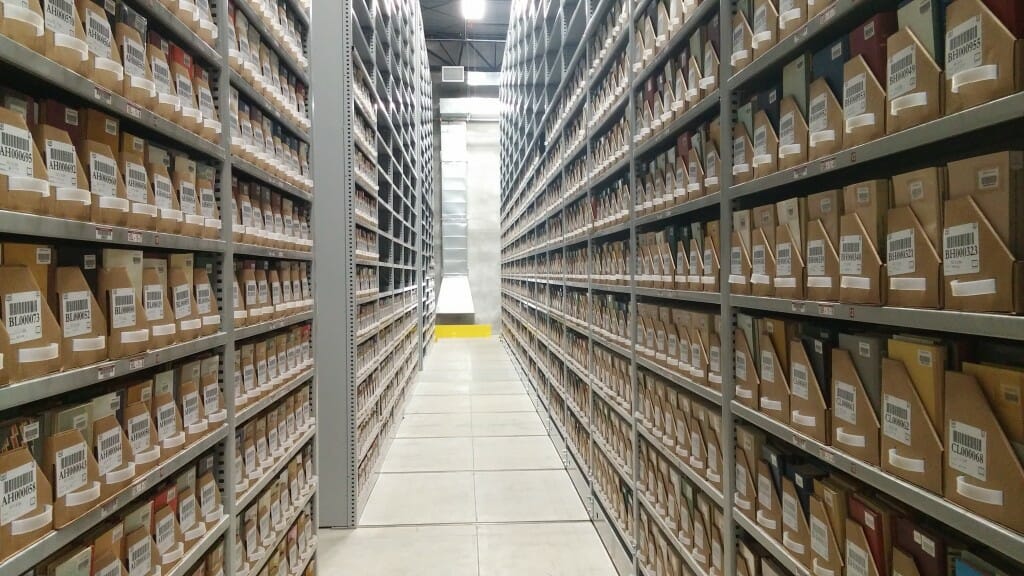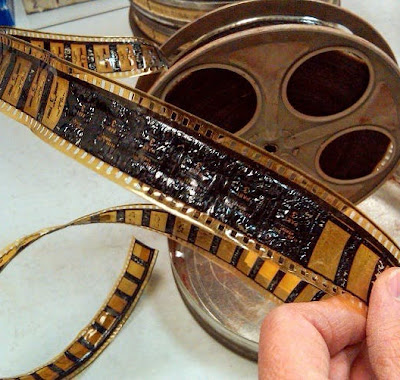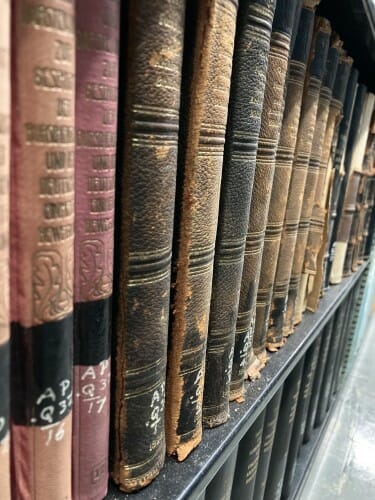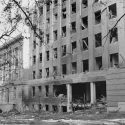New facility will preserve irreplaceable library resources

The new 38,160-square-foot Libraries Collections Preservation Facility will nearly quadruple the amount of shelving space available at an existing location in Verona . UW Libraries
UW–Madison has secured funding for a $33 million state-of-the-art shelving facility that provides the environmental controls needed to preserve its library collections.
The facility, featuring preservation-level environmental conditions, will be the first for UW–Madison. It will expand the current shelving space that is nearing capacity and enable UW–Madison Libraries to preserve some of the state’s most critical research materials that are part of its rare and distinctive collections. Relocation of these resources will also free up space for more modernized teaching, learning and research spaces on campus.
“UW Libraries’ collections include thousands of irreplaceable books, manuscripts and media that serve as invaluable resources to researchers throughout the UW System and beyond,” Chancellor Rebecca Blank says. “As stewards of these valued collections, it is our responsibility to ensure they are properly kept and preserved so they can be studied and treasured for generations to come.”
The project will be paid for by one-time funds approved by the vice chancellor for finance and administration. Tuition or state general purpose revenue is not being used to fund the building project.

“We have aging and at-risk materials we are going to lose if we don’t have a way to care for and preserve them properly,” says director of special collections David Pavelich. Courtesy of ProTek
The new 38,160-square-foot Libraries Collections Preservation Facility, identified as a strategic priority by campus, will nearly quadruple the amount of shelving space available at an existing location in Verona — a 10,000-square-foot facility in the Materials Distribution Services building adjacent to Surplus With A Purpose (SWAP). In general, the current Libraries’ facilities, which hold collections with a value of over $2.4 billion, lack proper environmental controls to meet preservation standards for the at-risk collections of film, audiotape, art and acidic paper-based materials.
“We have aging and at-risk materials we are going to lose if we don’t have a way to care for and preserve them properly,” says David Pavelich, director of special collections and interim director of collections. “Within University Archives, for instance, you can smell the so-called ‘vinegar syndrome’ from the decomposing film, which needs cold storage for stabilization. The Libraries’ 2018 master plan shows multiple concerns with our mechanical, electrical and plumbing systems, leaving unique and rare collections vulnerable to unfavorable conditions. We must have a preservation-quality facility where we can house these materials and ensure their safety, and from which we can provide responsive service to our users.”
Long-term access to rare special collections and fragile materials requires conditions where temperature and humidity are controlled, along with appropriate fire protection and modern security technology. Verona’s current off-site shelving facility is reaching capacity and lacks the environmental controls that the most unique and deteriorating items in the collection require, Vice Provost for Libraries and University Librarian Lisa Carter says.
“The Libraries are responsible for properly stewarding the tremendous research collections we are fortunate to have at UW–Madison,” says Carter. “Our collections are used by and inspire researchers across all disciplines and around the world. The ability to protect and sustain long-term access to these rich resources and the ability to grow these collections is not just in the best interest of UW–Madison. These are the state’s materials, used by people across Wisconsin and around the world, helping us keep the concept of the Wisconsin Idea in practice.”

UW Libraries’ collections include thousands of irreplaceable books, manuscripts and media. UW Libraries
It will be at least three years from now that the facility will be built and operational. Groundbreaking is expected in late 2023. In the meantime, Libraries’ leadership is committed to engaging in ongoing and large-scale discussions with faculty and other campus partners to help evaluate which materials are most appropriately held in the new facility. As the project gets underway, the Libraries will continue to apprise the campus community of the progress. Once in use, the Libraries will share the impacts and benefits of the facility on the overall Libraries agenda for collections stewardship and use of spaces to enhance the academic experience of our campus community.
“Our growing collections require effective use of buildings and appropriate facilities to care for materials. The spaces in which we manage the library resources that UW–Madison research relies on are, for all practical purposes, full and deteriorating due to age,” Vice Chancellor for Finance and Administration Robert Cramer says. “As we consider the future of our libraries, we must have a solution to address these challenges and allow us to reimagine other uses of on-campus spaces.”
The Libraries Collections Preservation Facility will also help address ongoing space issues on campus. It will free up prime space for multipurpose uses such as active learning environments and spaces to facilitate interdisciplinary research and scholarly collaboration using emerging technologies. The LCPF can provide a swing space during library renovations, providing opportunities to improve spaces, enhance academic experiences, and strengthen partnerships.
“We recognize and appreciate that our users represent a diverse range of disciplines and interests, with different approaches to how they use the Libraries collections and resources,” Carter says. “We aim to maximize access to our collections, invest in the necessary infrastructure to steward our valued collections responsibly, and provide spaces that meet users’ research and study needs.”



